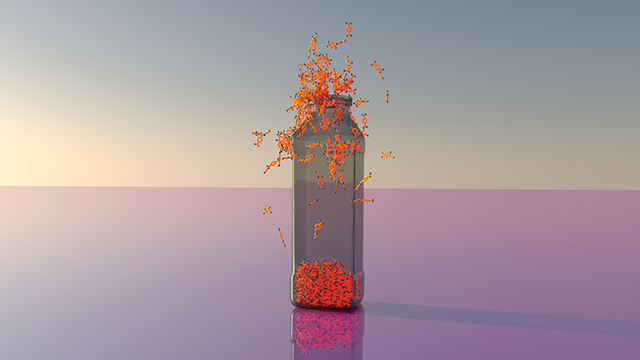The link between science and art may not be obvious to some. But for three Northwestern University scientists, the connection between the two is innate.
Beginning this weekend, professors Aaron Packman and Daniel E. Horton and molecular biosciences Ph.D. candidate Luis Schachner will explore this connection at different exhibits around Chicago.
Packman and Horton were among 14 artists and scientists brought together as a part of an art exhibition opening at the Brushwood Center at Ryerson Woods, "Third Coast Disrupted: Artists + Scientists on Climate." The exhibition culminates a yearlong conversation between scientists and artists that centered on impacts and solutions to climate change in the Chicago region.
"I think this work is critically important because of the challenges we face today," said Packman, director of Northwestern University's Center for Water Research and professor of civil and environmental engineering in the McCormick School of Engineering. "It lets us see the significance of some of these issues and what we can do about them in a very broadly understandable way."
Before the artist-scientist dialogue, which included the selected artists and scientists presenting about their work, artist N. Masani Landfair attributed the chronic basement flooding of her former Chicago home to the aging and inadequate infrastructure of her South Side neighborhood. Over the course of the conversations Packman shared that climate change is increasing the frequency of intense storms and severe flooding in the Chicago area. Landfair further connected her experience to climate change when scientist Elena Grossman, a researcher at the University of Illinois Chicago School of Public Health, shed light on the health impacts of climate change.

Based on these conversations and her personal experience of local climate change, Landfair created a series of collages that relate the physical and mental health tolls of frequent flooding.
"Third Coast Disrupted" features seven recently commissioned artworks inspired by conversations between artists and scientists, and will open Friday, May 7 at Brushwood Center at Ryerson Woods, 21850 N. Riverwoods Road, Riverwoods, with a virtual opening reception at 7 p.m. CDT on Thursday, May 6. The exhibition was created through a collaboration among Columbia College Chicago, DePaul University's Institute for Nature and Culture, and Terracom.
"One exciting aspect of the show is visitors' ability to hear directly from the artists and scientists," said Christine Esposito, project director and lead curator of "Third Coast Disrupted," and founder of Terracom and its Ex.Change Project. "Through QR codes accompanying each artwork, guests can see the artists and scientists talk about their work."
The show is part of Brushwood's 38th annual Smith Nature Symposium, which explores climate justice and healing through the power of community. To learn more about visiting the exhibition and related programs, visit www.BrushwoodCenter.org or www.ThirdCoastDisrupted.org.
For Schachner, a trainee at the Chemistry of Life Processes Institute at Northwestern, art became a critical component of his research.

"The data output of my work involving mass spectrometry, a technique that measures the mass of molecules, has its own artistic and aesthetic qualities," Schachner said. "I am using mass spectra to create pieces of art that help reimagine the uses and applications of scientific data."
Schachner collaborated with professors, postdoctoral researchers and students across Northwestern departments to create a body of work now published in a chapbook. This work also will be featured as part of an immersive art experience called "reVISION" at the Evanston Art Center from May 14 to 16.
The work will be displayed at Evanston Art Center's first-ever immersive art experience focused on creating upcycled and interactive installations for the public to socially engage with and think critically about reducing waste, recycling and repurposing disposable objects.
Schachner's project, "Molecular and Spectral Perspectives of Plastic," will include a combination of 3D-printed sculptures, live experiments, prints, projected animations and an augmented reality game built around the exhibit.
Participants can register for the three-day event by visiting Eventbrite. Admission is $15 with all ticket sales supporting the Evanston Art Center nonprofit's programming, education and outreach.






